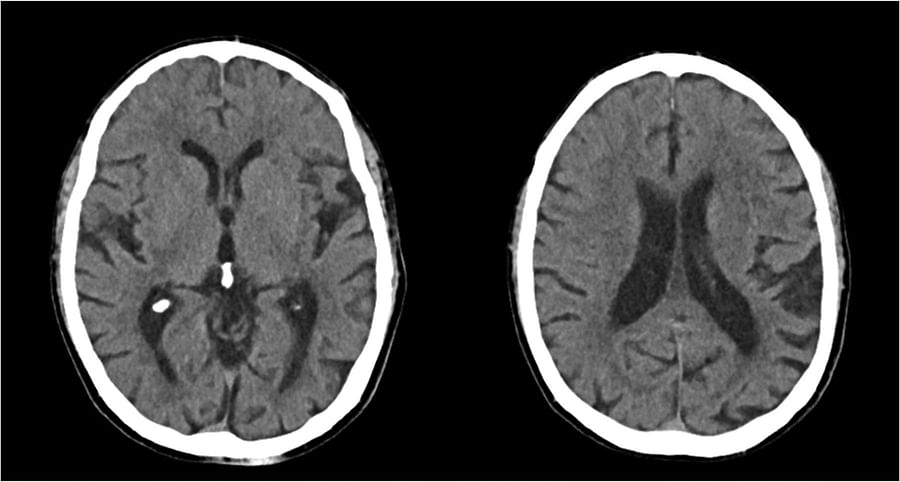Exploring the Role of the Sage Test in Early Detection of Dementia

Imagine a world where the insidious creep of dementia could be detected and managed before it takes hold. This is not a far-off dream, but a reality we are steadily approaching through advancements in early dementia detection. Dementia, a term encompassing conditions like Alzheimer's dementia and vascular dementia, is a formidable opponent, often leaving families feeling powerless in its wake. But what if we could turn the tide?
Understanding dementia, particularly the difference between vascular dementia and Alzheimer's, is a crucial first step. With this knowledge, we can better recognize the early signs and take action. This is where the SAGE test comes into play. In our quest for early dementia detection, the SAGE test has emerged as a beacon of hope, allowing us to explore the inner workings of our minds before dementia casts its long shadow.
Are you along for the ride? We're about to enter the captivating world of the SAGE test and its significance in spotting dementia early on.

So, you might be wondering, what's the deal with the SAGE test and why is it instrumental in detecting dementia early on? Essentially, SAGE stands for Self-Administered Gerocognitive Examination, a brief but potent instrument crafted to uncover cognitive impairments such as dementia. This straight-forward, paper-and-pencil test measures multiple cognitive faculties, like memory, problem-solving abilities, and spatial awareness.
But why should we care about this test? Well, early detection of dementia is crucial. It allows for timely interventions, better management of symptoms, and can significantly improve the quality of life for those affected. Whether it's frontotemporal dementia, Alzheimer's dementia, or understanding the difference between vascular dementia and Alzheimer's, the SAGE test can help in identifying the early signs.
Remember, the journey of dementia care begins with understanding and early detection. And the SAGE test plays a pivotal role in that journey.
To better understand the SAGE test, let's hear from the experts at the Ohio State Wexner Medical Center. They have developed this Self-Administered Gerocognitive Exam (SAGE) to detect early signs of cognitive decline.
The video gives a neat explanation of the SAGE test. With the basics covered, it's time to get into the nitty-gritty details of the test's sections and components.
Peeling back the layers of the SAGE test, we find four key areas that it targets. These include orientation, language, reasoning/computation, and visuospatial abilities. Each section is designed to probe different cognitive abilities. For instance, the orientation component assesses awareness of date and time, while the language section delves into picture naming and verbal fluency. Meanwhile, the reasoning/computation section tests basic calculation skills, and the visuospatial section evaluates the ability to copy geometric designs.
Now, you might wonder, what's the difference between vascular dementia and Alzheimer's, and how does the SAGE test factor in? Well, both conditions can impact these cognitive areas, but they often present differently. The SAGE test helps identify these subtle differences, aiding in early dementia detection.
Remember, understanding dementia and its many forms is a journey, not a destination. The SAGE test is just one tool in our arsenal. As we continue exploring the role of the SAGE test, we'll uncover more about this fascinating field.

When it comes to early dementia detection, the SAGE test plays a pivotal role. One of its chief benefits is its simplicity; it's a self-administered test that can be taken in the comfort of your own home, providing a preliminary assessment of your cognitive abilities. However, while the test can indicate potential cognitive issues, it's not foolproof. It alone cannot distinguish between Alzheimer's dementia, vascular dementia, or other types of cognitive decline.
Remember, while the SAGE test is a valuable tool, it's part of a broader picture. For a conclusive dementia diagnosis, a thorough clinical evaluation is necessary. If the SAGE test results are low for you or a loved one, it's vital to get additional medical advice. Whether you're desiring to comprehend the possible stage of dementia a loved one is in, or wrestling with the daily routines that can aid those living with dementia, always keep in mind that spotting it early is crucial.
Having introduced the SAGE test and highlighted its role in early detection of dementia, it's time to guide you through the right way to take the test.
Now that you know how to properly take the SAGE test, let's discuss some additional tips and advice to ensure you get the most accurate results.
As you take the SAGE test, remember that it's not a pass or fail exam, but rather a tool to reveal cognitive changes that may warrant further investigation. It's perfectly normal to find some questions challenging. The key is to answer as honestly as possible.
It's also important to note that the SAGE test is not exclusive to Alzheimer's dementia. It can also be an effective tool in the early detection of other types of dementia, such as vascular dementia. To understand the difference between vascular dementia and Alzheimer's, we have a detailed article that explores these conditions in depth.
Remember, early spotting of dementia can lead to more effective planning and treatment strategies. Whether you're testing yourself or helping a close one, rest assured that you're taking a significant stride towards comprehending dementia and securing optimal care.
You've successfully completed the SAGE test, an essential step towards comprehending dementia. What follows this? Your healthcare specialist will scrutinize the results, checking for any inconsistency or irregularity in your responses. This review aids in pinpointing potential cognitive issues, serving as a launchpad towards a more definitive diagnosis.
It's important to remember that the SAGE test isn't a definitive diagnosis tool. Rather, it's an early warning system, a way to detect potential problems before they escalate. If your results suggest possible dementia, your doctor might recommend further tests. These could range from brain scans to more detailed cognitive assessments, aimed at distinguishing between conditions like vascular dementia and Alzheimer's dementia.
Keeping in mind that early detection is vital for managing dementia. Timely intervention significantly enhances the quality of life. Regardless of the results, you have taken a crucial step towards actively caring for your mental well-being. But remember, you're not alone. We're here to guide and support you, every step of the journey.

While the SAGE Test is an invaluable tool in the early detection of dementia, it's not the only method available. Have you ever wondered about the difference between vascular dementia and Alzheimer's dementia? Understanding these nuances can be aided by other cognitive tests like the Mini-Mental State Examination (MMSE) and the Montreal Cognitive Assessment (MoCA). These tests, like the SAGE, help to identify cognitive impairment early on.
Also worth noting, non-invasive brain imaging methods like MRI and PET scans are showing potential in spotting early dementia signs. These techniques detect shifts in the brain's structure and function before symptoms surface. But let's not forget, early detection goes beyond tests. Observing behavioral changes, like the strange habit of nose-picking, can also indicate cognitive decline.
While we're unfolding the significance of the SAGE Test, it's essential to remember the value of a comprehensive approach in recognizing dementia and its early detection.
Test your knowledge on dementia detection methods, focusing on the SAGE test.
Learn more about 🧠 Understanding Dementia Detection Methods: Test Your Knowledge or discover other Dementia Care Tips quizzes.
As we journey through the labyrinth of dementia, let's pause for a moment. Why? To acknowledge the power of the SAGE test in early dementia detection. Early detection isn't just a phrase; it's a lifeline, a beacon in the foggy maze of dementia, illuminating a path to better management and improved quality of life. From the nuances of vascular dementia vs Alzheimer's dementia, to the stark reality of childhood dementia, our understanding evolves continuously, and so does the SAGE test.
But let's not forget - while the SAGE test is a potent tool, it's not the sole torchbearer. Other detection methods, like the MoCA and MMSE, also contribute to our growing arsenal against dementia. Each new discovery, each breakthrough, and each step forward brings us closer to our goal - a world where dementia is understood, not feared. And in this quest, the role of the SAGE test is undeniable.
What's the key message? It's essential to further our understanding of the SAGE test, support ongoing research, and above all, extend our care. After all, we're all woven into the same rich tapestry of human life, threaded with memories and experiences.
Your feedback helps us create more engaging and informative content. Please rate the helpfulness of the information provided about the SAGE test.
Post a comment